Pearl Harbor sailor comes home for burial -- 77 years after he died
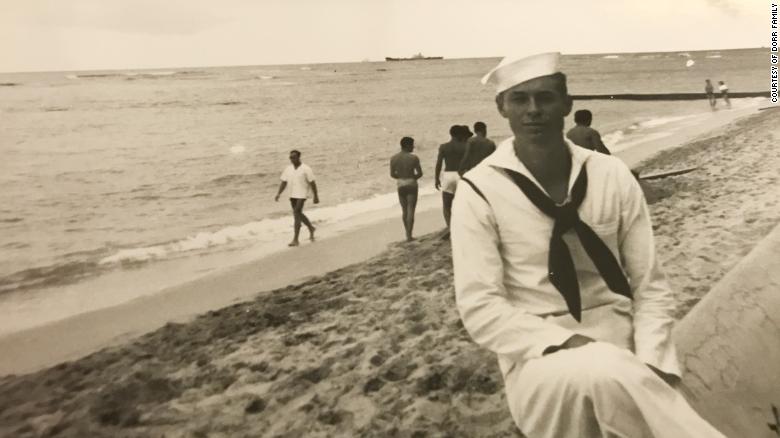
Carl David Dorr was on the USS Oklahoma when it was attacked in the Japanese raid.
(CNN)The Dorr family had been waiting for Carl to come home from the Navy for 77 years. This week, he finally did.
About 15 relatives on Wednesday walked onto the tarmac of South Carolina's Greenville-Spartanburg International Airport. They watched as a flag-draped coffin was lowered from the plane into a hearse.
"There was nothing but dead silence," Carl's 70-year-old nephew, Thomas Dorr, who lives in St. Johns, Florida, told CNN. "I knew that what I was experiencing was history."
Carl David Dorr, one of the 429 sailors and Marines killed on board the USS Oklahoma when it was sunk in the Japanese attack on Pearl Harbor, will be laid to rest on Friday -- the attack's anniversary.
Only 35 people on the ship were positively identified and buried in the years immediately following the December 7, 1941 military strike, according to the Defense Department. The unidentified remains were buried as unknowns at the National Memorial Cemetery of the Pacific, which fills the Punchbowl crater in Honolulu.
The Defense Department -- following a push by a Pearl Harbor survivor -- in recent years has been working to exhume those bodies. Using modern advances in technology, it is identifying the remains to give family members the closure and commemoration they have long awaited.
On Wednesday, the Dorr family took three limos and ahearse back to a funeral home in Greenville. Police and the Patriot Guard escorted them, Thomas Dorr said. The processional passed law enforcement and fire officials who offered a salute as they directed traffic.
A fire truck parked on an overpass draped a flag above them.
Once they arrived at the funeral home, the family sent Thomas in first to see Carl's casket. He had studied Pearl Harbor, and he felt like he had a close connection with his uncle because of his love for his grandmother.
Thomas knelt down next to the coffin, put his hand over it and wept, he said. He wept for Carl, who belonged back at home. He wept for Carl's parents, who missed him so much.
"I was crying tears for them," Thomas said.
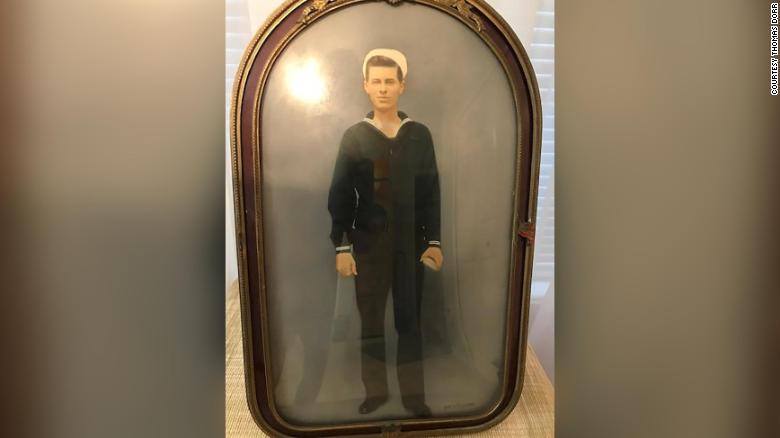
Portrait of Carl David Dorr who died in the attack on Pearl Harbor aboard the USS Oklahoma
A child of the Great Depression
Carl was one of six children in the Dorr household, but lost a sibling to rheumatic fever as a child. He worked as a projectionist in a Greenville area movie theater, according to Thomas, and during the Great Depression he supported his family with the money he made there.
While in the Navy, Carl sent his parents back home the cards he received, asking that they put the letters in a chest he built with his father. Carl wanted to keep them and put them in a scrapbook, Thomas said.
But the 27-year-old fireman second class would not make it home.

Photos: Day of infamy: Attack on Pearl Harbor
A fire spreads through the Army barracks at Hickam Field.
Hide Caption
8 of 15

Photos: Day of infamy: Attack on Pearl Harbor
Oil burns on the ocean's surface near the Naval Air Station shortly after the attack on Pearl Harbor.
Hide Caption
9 of 15

Photos: Day of infamy: Attack on Pearl Harbor
Smoke from burning oil billows over Hickam Field.
Hide Caption
10 of 15

Photos: Day of infamy: Attack on Pearl Harbor
A Japanese plane plummets in flames after it was hit by US Naval anti-aircraft.
Hide Caption
11 of 15

Photos: Day of infamy: Attack on Pearl Harbor
The USS California settles on the bottom of the harbor after being bombed and torpedoed by the Japanese.
Hide Caption
12 of 15

Photos: Day of infamy: Attack on Pearl Harbor
Wives of US military officers return to their residences after an explosion at Pearl Harbor.
Hide Caption
13 of 15

Photos: Day of infamy: Attack on Pearl Harbor
A rescue boat retrieves a seaman from the burning USS West Virginia.
Hide Caption
14 of 15

Photos: Day of infamy: Attack on Pearl Harbor
Crowds gather in New York's Times Square as news bulletins flash across the New York Times building announcing the attack on Pearl Harbor.
Hide Caption
15 of 15

Photos: Day of infamy: Attack on Pearl Harbor
Smoke and flames rise from the USS Shaw in Pearl Harbor after the Japanese attack on December 7, 1941. The Japanese Imperial Navy launched the surprise strike on the US naval base at the harbor, located on the Hawaiian island of Oahu. The assault killed more than 2,000 Americans and destroyed a significant number of US battleships and airplanes.
Hide Caption
1 of 15

Photos: Day of infamy: Attack on Pearl Harbor
Crewmen of the Japanese Hiryu aircraft carrier prepare fighter planes for takeoff before the raid on Pearl Harbor.
Hide Caption
2 of 15

Photos: Day of infamy: Attack on Pearl Harbor
This is believed to be an image of the first bomb dropped during the raid on Pearl Harbor; it shows a Japanese plane pulling out of a dive near the explosion.
Hide Caption
3 of 15

Photos: Day of infamy: Attack on Pearl Harbor
An aerial view of the harbor shows the destruction of the USS California, the USS. Maryland, the USS Oklahoma, the USS Tennessee, the USS West Virginia and the USS Arizona.
Hide Caption
4 of 15

Photos: Day of infamy: Attack on Pearl Harbor
Airmen at Hickam Field watch as bombs explode. The Hickam Field airbase was heavily targeted during the attack, and Japanese bombers sought to prevent counter-attacks from US forces by disabling American planes on the ground.
Hide Caption
5 of 15

Photos: Day of infamy: Attack on Pearl Harbor
Smoke plumes envelop the USS Arizona battleship as it keels over before sinking in Pearl Harbor.
Hide Caption
6 of 15

Photos: Day of infamy: Attack on Pearl Harbor
A US Army B-17E lands at Hickam Field on December 7. The base sustained heavy losses of both personnel and planes during the attack.
Hide Caption
7 of 15

Photos: Day of infamy: Attack on Pearl Harbor
A fire spreads through the Army barracks at Hickam Field.
Hide Caption
8 of 15

Photos: Day of infamy: Attack on Pearl Harbor
Oil burns on the ocean's surface near the Naval Air Station shortly after the attack on Pearl Harbor.
Hide Caption
9 of 15

Photos: Day of infamy: Attack on Pearl Harbor
Smoke from burning oil billows over Hickam Field.
Hide Caption
10 of 15

Photos: Day of infamy: Attack on Pearl Harbor
A Japanese plane plummets in flames after it was hit by US Naval anti-aircraft.
Hide Caption
11 of 15

Photos: Day of infamy: Attack on Pearl Harbor
The USS California settles on the bottom of the harbor after being bombed and torpedoed by the Japanese.
Hide Caption
12 of 15

Photos: Day of infamy: Attack on Pearl Harbor
Wives of US military officers return to their residences after an explosion at Pearl Harbor.
Hide Caption
13 of 15

Photos: Day of infamy: Attack on Pearl Harbor
A rescue boat retrieves a seaman from the burning USS West Virginia.
Hide Caption
14 of 15

Photos: Day of infamy: Attack on Pearl Harbor
Crowds gather in New York's Times Square as news bulletins flash across the New York Times building announcing the attack on Pearl Harbor.
Hide Caption
15 of 15

Photos: Day of infamy: Attack on Pearl Harbor
Smoke and flames rise from the USS Shaw in Pearl Harbor after the Japanese attack on December 7, 1941. The Japanese Imperial Navy launched the surprise strike on the US naval base at the harbor, located on the Hawaiian island of Oahu. The assault killed more than 2,000 Americans and destroyed a significant number of US battleships and airplanes.
Hide Caption
1 of 15

Photos: Day of infamy: Attack on Pearl Harbor
Crewmen of the Japanese Hiryu aircraft carrier prepare fighter planes for takeoff before the raid on Pearl Harbor.
Hide Caption
2 of 15

Photos: Day of infamy: Attack on Pearl Harbor
This is believed to be an image of the first bomb dropped during the raid on Pearl Harbor; it shows a Japanese plane pulling out of a dive near the explosion.
Hide Caption
3 of 15

Photos: Day of infamy: Attack on Pearl Harbor
An aerial view of the harbor shows the destruction of the USS California, the USS. Maryland, the USS Oklahoma, the USS Tennessee, the USS West Virginia and the USS Arizona.
Hide Caption
4 of 15

Photos: Day of infamy: Attack on Pearl Harbor
Airmen at Hickam Field watch as bombs explode. The Hickam Field airbase was heavily targeted during the attack, and Japanese bombers sought to prevent counter-attacks from US forces by disabling American planes on the ground.
Hide Caption
5 of 15

Photos: Day of infamy: Attack on Pearl Harbor
Smoke plumes envelop the USS Arizona battleship as it keels over before sinking in Pearl Harbor.
Hide Caption
6 of 15

Photos: Day of infamy: Attack on Pearl Harbor
A US Army B-17E lands at Hickam Field on December 7. The base sustained heavy losses of both personnel and planes during the attack.
Hide Caption
7 of 15

Photos: Day of infamy: Attack on Pearl Harbor
A fire spreads through the Army barracks at Hickam Field.
Hide Caption
8 of 15















In Pearl Harbor, the battleship affectionately known to crew members as "The Okie" capsized about 12 minutes after the first of numerous torpedo strikes. Hundreds were trapped in a dark, watery tomb below her decks, marking the second greatest loss of life that day.
Carl's family gathered around the radio on December 7, 1941, Thomas Dorr said. They knew Carl's ship had been attacked. They held out hope he survived.
They were told he was missing in action. Then, they learned, he was presumed dead.
After the Defense Department began DNA collection in 2009, his family provided samples in hopes that one day it would help identify Carl's body, his nephew said.
His mother kept an heirloom photograph in her living room "so she could keep an eye on him," Thomas Dorr said. She was able to see her son every day, even if he never made it home at all.
'History repeating itself'
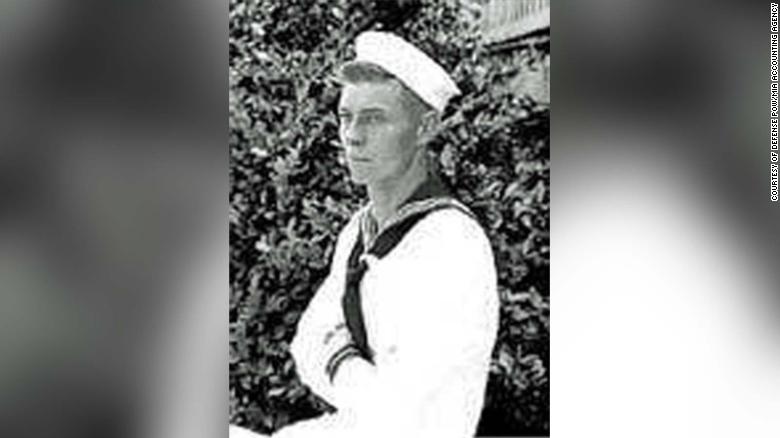
Carl Dorr in a photo released by the US Navy when his remains were identified.
Thomas Dorr knows that photograph well.
He was 20 when he finished boot camp. He visited Mama John's house (his grandmother and Carl's mother), in Greenville, South Carolina, a lean 6 foot 2 and 180 pounds, dressed in a khaki uniform and garrison cap.
Mama John had tears in her eyes, Thomas said, and whispered to him "it's like Carl coming home from war."
She died a year and a half later, Thomas said. But not before he pledged to her that he would honor Carl.
"I made that promise to her that my first-born son would bear his name," Thomas said.
On June 2, 1976, Thomas became a father to Carl David Dorr, who grew up to enlist in the Navy right out of high school.
Thomas said it's like "history repeating itself."
The effort to identify the remains
The late Ray Emory knew that hundreds of families across the United States were like the Dorrs -- mourning without being able to lay their loved ones to rest.
Emory, a chief boatswain's mate who manned a .50-caliber machine gun and fired at Japanese aircraft, survived the attack on Pearl Harbor.
During a visit to the National Memorial Cemetery of the Pacific, Emory told CNN in 2012, no one could tell him even where the remains were buried.
So began Emory's journey to get the remains of those lost on USS Oklahoma identified.
Emory's "research efforts" led to the 2003 disinterment of a single casket with the remains of USS Oklahoma crew members from the Punchbowl in 2003, said Lt. Colonel Kenneth Hoffman, a spokesman for the Defense POW/MIA Accounting Agency (DPAA).
"And his efforts were key to in 2009, the Department of Defense beginning the collection of DNA family reference samples for all unidentified Oklahoma crew members; a precursor to DPAA commencing a project to identify all 394 individuals," Hoffman said.
Since DPAA disinterred all unknown Oklahoma graves from the Punchbowl in 2015, 189 sailors and marines have been identified and returned to their families, according to Hoffman.
"We are working hard to identify the remainder over the next two years," he said.
The evidence used in the identification process includes historical records, material evidence, skeletal remains, dental material, and the comparison of DNA from bones and teeth with family reference samples, Hoffman said.
According to the Defense POW/MIA Accounting Agency, Carl Dorr's remains were exhumed in 2015. And thanks to dental records and DNA, they were finally identified on July 25 of this year.
Laying him to rest
Thomas said he remembered seeing the chest Carl had reserved to hold onto his military correspondence. For 30 years, he looked for it, but no one in the family knew where it was.
Then in 1998, while staying the night at a cousin's house in Georgia, he learned the cousin had been keeping the chest in his garage for Thomas' son, Carl's namesake.
Thomas gave it to his father (Carl's brother) for Father's Day, he said. In the chest were hundreds of letters, USS Oklahoma menus from 1941, Carl's military ID and a picture of the USS Oklahoma that he had turned into a post card. Thomas said his father collapsed over the chest and started wailing.
That year, the family held a memorial service for Carl, with his four living siblings.
All they had of Carl was his belongings in the chest, Thomas said.
"It was a memorial service with the family to accept the fact that we actually were remembering his presence on earth."
But this Friday -- 77 years after he died -- they will have more of Carl than the pictures he took and the letters he wrote. They will bury him close to family members, including his parents.
"It's the end of a story. He lived his life. He died for his country. He's come home. The story ends now," Thomas said.
He paused. "But he will always be remembered," he said.
CNN's Ray Sanchez and Phil Gast contributed to this report.
end quote from:
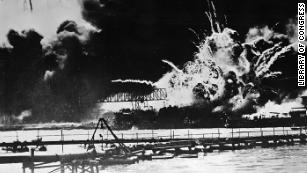
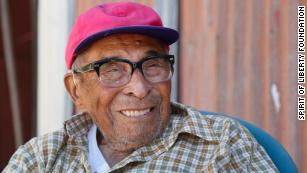
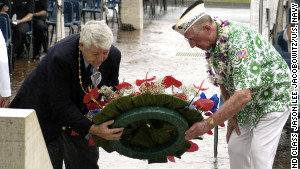
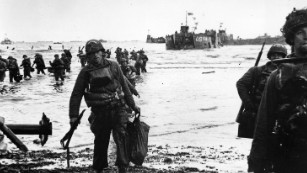
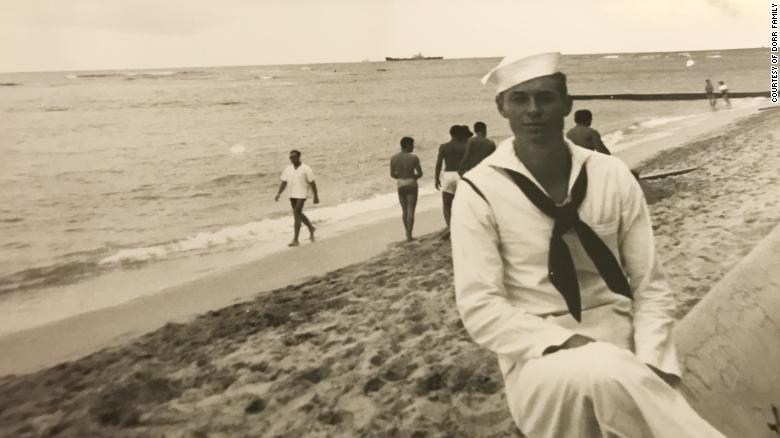
No comments:
Post a Comment